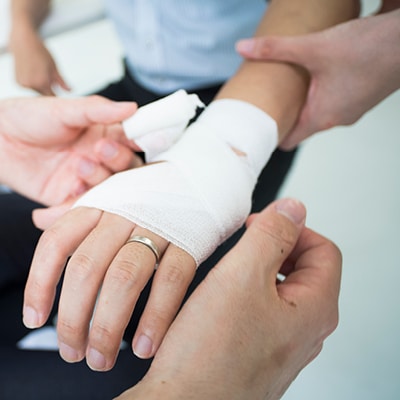naturaline
4 stages in wound healing
Hemostasis Phase
Inflammatory Phase
Inflammation is the second stage of wound healing and begins right after the injury when the injured blood vessels leak transudate (made of water, salt, and protein) causing localized swelling. Inflammation both controls bleeding and prevents infection. The fluid engorgement allows healing and repair cells to move to the site of the wound. During the inflammatory phase damaged cells, pathogens, and bacteria will be removed from the wound area. These white blood cells, growth factors, nutrients and enzymes create the swelling, heat, pain and redness commonly seen during this stage of wound healing. Inflammation is a natural part of the wound healing process and only problematic if prolonged or excessive.
Proliferative Phase
The proliferative phase is when the wound is rebuilt with new tissue which is made up of collagen. A new network of blood vessels will be constructed so that the granulation tissue can be healthy. In healthy stages of wound healing, granulation tissue is pink or red and uneven in texture. Moreover, healthy granulation tissue does not bleed easily. Dark granulation tissue can be a sign of , ischemia, or poor perfusion. In the final phase of the proliferative stage of wound healing, epithelial cells resurface the injury.
Maturation Phase
Maturation phase is also called as remodeling stage of wound healing. It is when the collagen is remodeled from type III to type I. Cross-linking of collagen reduces scar thickness and makes the skin area of the wound stronger. Generally, remodeling begins about 21 days after an injury and can continue for a year or more.

